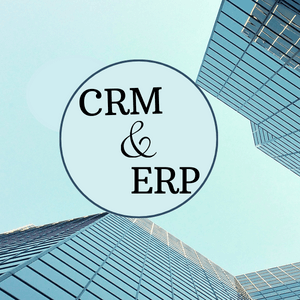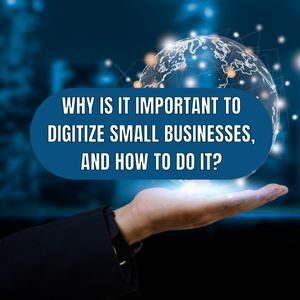Today we all live in a remarkably interesting society. One that is moving, evolving and changing at breakneck speed. Therefore, it is common to feel out of the loop. The pandemic, nevertheless, has brought a new transformation, has catalyzed revolutionizing the way we do business.
With vaccine on its way, it seems like we might just be at the finish line. But will things go back to normal? While the answer is most likely ‘No”, it isn’t necessarily a bad thing. For business and entrepreneurship, the new reality is going to be a different one, and not the worse one. It’s all about how businesses adapt to the change, and how prepared they are for the future.
The Business Models change
Businesses did suffer from the pandemic – it is as clear as the sky is blue. A study conducted by ‘The National Bureau of Economic Research’, concluded that: “The number of active business owners in the United States plummeted by 3.3 million or 22 percent over the crucial two-month window from February to April 2020.”[1] Statistics Canada reports that “Over half of businesses in Canada reported a revenue decrease compared to August 2019, irrespective of their employment size. … smaller businesses report a revenue decrease of 40% or more.”[2]
Some industries, however, made it work during the pandemic.
Just a quick look at the fast-food industry will give you a clear idea of what that means. If you can’t serve your customers inside your location, why not send your product to their house?
The logistics of this switch can be hard, especially for small businesses. This is where companies that specialize in delivery came in. Many restaurants decided to give their delivery tasks to third parties. Think: ‘UberEats’, ‘SkipTheDishes, ‘DoorDash’, and so on… Being able to ‘toy around’ with your business model, and going from serving people at your location, to sending the product to their houses, ended up being the saving stone for most restaurants.
Same with the grocery stores. Over a fifth of Canadians have bought more groceries online due to COVID-19[3]. To answer the demand grocery chains had to make significant changes to their business models -from hiring more employees to deal with online orders to adjusting the inventory management strategies to cope with shortages in supplies and higher demand for retail goods.[4]
Another industry that took a similar approach was the automotive industry. Being already part of an uncertain terrain, different companies in this industry were quick to adapt. They started offering more and more of their services online, for example, established online sales offerings, including a clearly structured online shop, contactless test drives, and car home deliveries. McKinsey claims that these changes are a matter of life and death for this industry, and not only a mere byproduct of a pandemic[5].
Retailers were among the worst hit. With curfews, shutdowns, and the mandatory closing of stores, it has been a bad year for the industry, to say the least. The only businesses to somehow cling to life during 2020, as retailers, have been ones that decided to start making their sales online. With a business model that allowed online sales, some businesses maintained their liquidity during this period. However, most studies suggest that the changes in customer behavior, caused by the pandemic are here to stay. Therefore, most business consultants are urging retail owners to adapt their business model and to stop hoping for a ‘return to normal’, as one, probably, won’t come.
This dynamism in how their business model works allows companies within these industries to adapt and overcome the challenges. Being on the verge of catastrophe once, and surviving thanks to switching your business model around is definitely a great way to learn the lesson that dynamism can be, literally, life-saving.
Your business and the post-pandemic reality
Here are the two main lessons we extracted from the above.
1. Dynamic business models and business processes work better
Dynamic business models allowed different industries to deal better with the pandemic. The same goes for your business process. Don’t choose a hill to die on, instead try finding alternate routes and ways of doing your business for each scenario. All the successful examples above featured businesses that were able to find new means of production, new ways of delivery, and new avenues of sales. Think about your business model and your business process, could your current state support something like that?
2. Technology is your biggest ally
In times of dire situations, the importance of information and data is beyond measure. If you set up your digital business in a manner that feeds you information, you will find it easier to deal with any situation. At the same time, with a workforce that is moving towards working from home, you can’t overstate how important it is to have the necessary business technology to help you facilitate this move. Being able to offer “work from home” options to your employees is something that you can’t avoid striving for. The future is already here, and it is our duty to keep up.
Conclusion
Now that all is said, what remains is for things to be done. Having a digital business and creating a business model or business process that is capable of adjusting to change can seem very hard at first glance.
Of course, a lot of things are beyond our control. But as the old saying goes “Fortune favors the prepared mind.” Don’t leave everything in the hands of fate. Instead, start preparing today and check out our articles: Tech-Stack for Small and Medium Businesses – The Basics and Technology problem-solving for small and medium businesses
[1] https://www.nber.org/system/files/working_papers/w27309/w27309.pdf
[2] https://www150.statcan.gc.ca/n1/pub/45-28-0001/2020001/article/00088-eng.htm
[3] https://www.newswire.ca/news-releases/over-a-fifth-of-canadians-have-bought-more-groceries-online-due-to-covid-19-844596662.html
[4] https://www.ncbi.nlm.nih.gov/pmc/articles/PMC7264603/
[5] https://www.mckinsey.com/industries/automotive-and-assembly/our-insights/reimagining-the-auto-industrys-future-its-now-or-never





